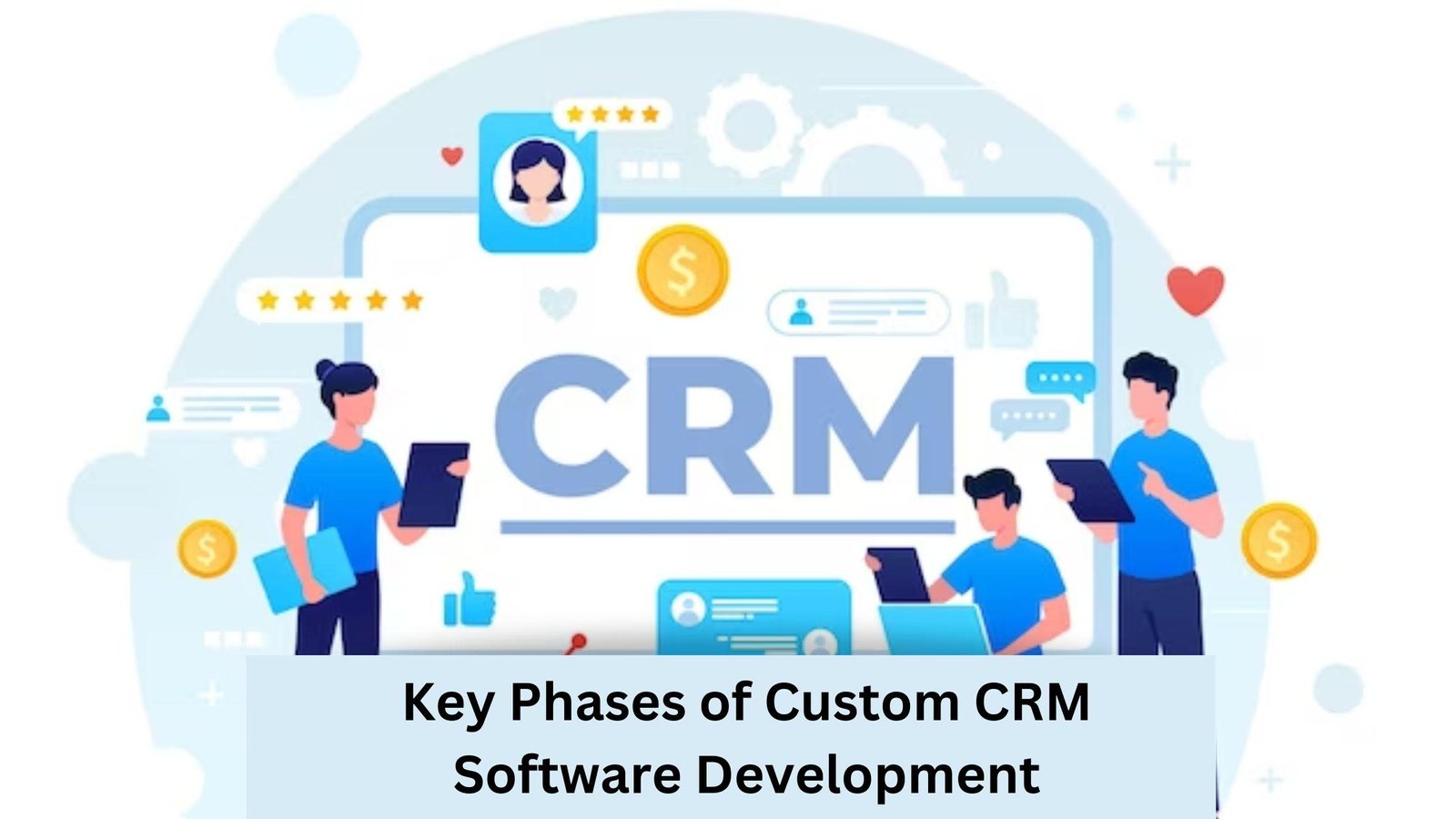In the fast-paced and competitive business landscape of today, Customer Relationship Management (CRM) plays a pivotal role in driving success. While off-the-shelf CRM solutions exist, businesses often find themselves in need of tailored solutions that align seamlessly with their unique processes and objectives.
This is where custom CRM software development comes into play, offering a personalized approach to managing customer relationships and enhancing overall business efficiency.
In this blog, we will delve into the key phases of custom CRM software development, exploring the journey from conception to implementation.
Phase 1: Requirement Analysis
The foundation of any successful custom CRM software development project lies in a thorough understanding of business requirements. This phase involves collaboration between developers and stakeholders to identify the specific needs and goals of the organization. Questions such as "What functionalities are essential?" and "How should the CRM align with existing workflows?" are addressed during this phase. The aim is to create a comprehensive roadmap that serves as a guide throughout the development process.
The Requirement Analysis phase is crucial for avoiding scope creep and ensuring that the final product meets the expectations of all stakeholders. This involves conducting interviews, workshops, and surveys to gather insights from end-users and decision-makers, resulting in a clear and detailed project scope.
Phase 2: Planning and Strategy
Once the requirements are defined, the development team moves on to the planning and strategy phase. This involves creating a detailed project plan that outlines the timeline, resource allocation, budget, and potential risks. Decisions about the technology stack, development methodology, and team structure are also made during this phase.
In custom CRM software development, strategic planning is essential for aligning the project with the overall business strategy. A well-defined roadmap ensures that the project progresses smoothly, adheres to deadlines, and stays within the allocated budget.
Phase 3: Design and Prototyping
With the plan in place, the development team transitions to the design and prototyping phase. Here, the focus is on creating a user-friendly and visually appealing interface that aligns with the identified requirements. Wireframes and prototypes are developed, allowing stakeholders to visualize the CRM's layout and functionalities before actual development begins.
User experience (UX) and user interface (UI) design play a crucial role in this phase, ensuring that the custom CRM software is intuitive and easy to navigate. Feedback from stakeholders is incorporated into the design, refining the prototype until it meets the expectations of end-users and decision-makers.
Phase 4: Development
The development phase is where the custom CRM software starts taking shape. Using the chosen technology stack, the development team begins coding the various modules and features outlined in the project plan. This phase is marked by constant communication between developers, project managers, and stakeholders to address any emerging issues or changes in requirements.
Agile methodologies are often employed during the development phase, allowing for flexibility and iterative improvements. Regular testing is also conducted to identify and rectify bugs or inconsistencies in the code. The goal is to create a robust and scalable CRM solution that aligns seamlessly with the organization's processes.
Phase 5: Testing
Testing is a critical phase in custom CRM software development, ensuring that the application is free from errors and meets the specified requirements. Various types of testing, including functional testing, performance testing, and security testing, are conducted to guarantee the reliability and effectiveness of the CRM.
User acceptance testing (UAT) is particularly important during this phase, allowing end-users to interact with the CRM and provide feedback. This feedback is valuable for making any final adjustments before the software is deployed. Rigorous testing helps prevent issues that could impact the CRM's performance in a real-world business environment.
Phase 6: Deployment
Once the custom CRM software has undergone thorough testing and received approval from stakeholders, it is ready for deployment. The deployment phase involves implementing the CRM solution in the organization's infrastructure, making it accessible to end-users. This process requires careful coordination to minimize downtime and ensure a smooth transition from any existing systems.
During deployment, data migration may be necessary to transfer information from legacy systems to the new CRM. Training sessions are also conducted to familiarize users with the new interface and functionalities. A phased rollout approach may be adopted to minimize disruptions and allow for continuous monitoring of the CRM's performance.
Phase 7: Maintenance and Support
The custom CRM software development process doesn't conclude with deployment. Continuous maintenance and support are essential to address any issues that may arise post-implementation and to ensure the CRM remains aligned with evolving business needs. Regular updates and patches are released to enhance security, fix bugs, and introduce new features based on user feedback.
Ongoing support also involves providing assistance to users, resolving queries, and offering training sessions for new employees. This phase ensures the longevity and effectiveness of the custom CRM software, positioning it as a valuable asset for the organization over the long term.
Conclusion
The journey through the key phases of custom CRM software development is a strategic investment for businesses aiming to elevate their customer relationship management and overall operational efficiency. As organizations recognize the need for tailored solutions to meet unique requirements, engaging with a reputable custom software development company becomes imperative.
The collaboration between stakeholders and adept developers during the requirement analysis phase sets the stage for a comprehensive project scope, steering clear of scope creep and ensuring alignment with organizational goals. Strategic planning and meticulous attention to detail during the planning and strategy phase guarantee a roadmap that not only adheres to timelines and budgets but also aligns the custom CRM with the broader business strategy.

